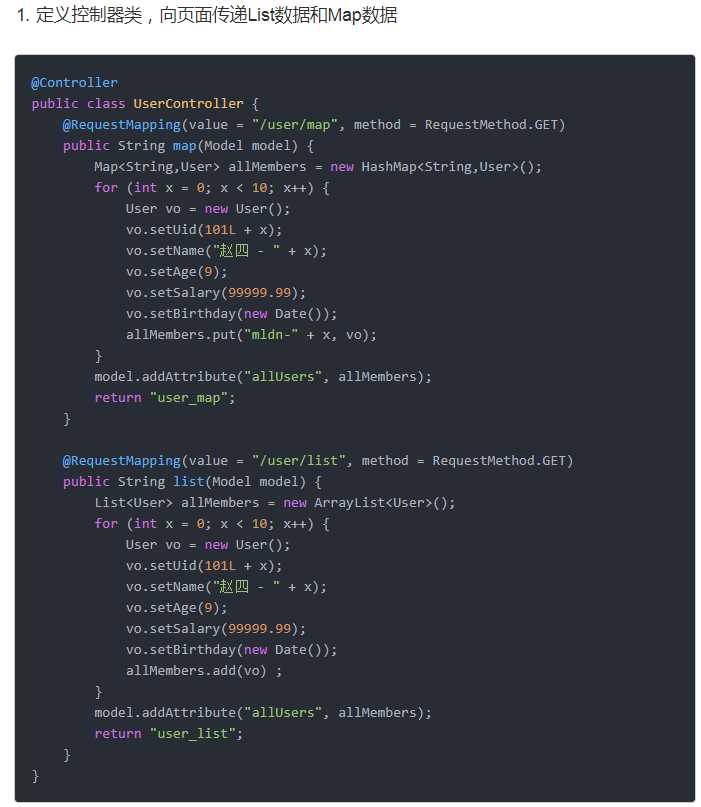标签:实现 asc header contex http sage 表达 request real
1. 声明当前文件是 thymeleaf, 里面可以用th开头的属性
<html xmlns:th="http://www.thymeleaf.org">
3. 把 name 的值显示在当前 p里,用的是th开头的属性: th:text, 而取值用的是 "${name}" 这种写法叫做 ognl,额。。。什么意思呢。。。就是跟EL表达式一样吧。 这样取出来放进p 里,从而替换到 原来p 标签里的 4个字符 "name" .
<p th:text="${name}" >name</p>
用这种方式,就可以把服务端的数据,显示在当前html里了。 重要的是: 这种写法是完全合法的 html 语法,所以可以直接通过浏览器打开 hello.html,也是可以看到效果的, 只不过看到的是 "name", 而不是 服务端传过来的值 "thymeleaf"。
4. 字符串拼写。 两种方式,一种是用加号,一种是在前后放上 ||, 显然第二种方式可读性更好。
<p th:text="‘Hello! ‘ + ${name} + ‘!‘" >hello world</p>
<p th:text="|Hello! ${name}!|" >hello world</p>
这两种方式都会得到: hello thymeleaf。
模板中添加头部HTML:
<body>
<div th:replace="fragments/header :: header">...</div>
显示HTML th:utext
1、然后在页面中可以通过“@{路径}”来引用。
<script type="text/javascript" th:src="@{/js/main.js}"></script>
页面之间的跳转也能通过@{}来实现
<a th:href="@{/show}">访问controller方法</a>
<a th:href="@{/static_index.html}">访问静态页面</a>
操作内置对象
<p th:text="${#httpServletRequest.getRemoteAddr()}"/>
<p th:text="${#httpServletRequest.getAttribute(‘requestMessage‘)}"/>
<p th:text="${#httpSession.getId()}"/>
<p th:text="${#httpServletRequest.getServletContext().getRealPath(‘/‘)}"/>
<hr/>
<p th:text="‘requestMessage = ‘ + ${requestMessage}"/>
<p th:text="‘sessionMessage = ‘ + ${session.sessionMessage}"/>
<p th:text="‘applicationMessage = ‘ + ${application.applicationMessage}"/>



标签:实现 asc header contex http sage 表达 request real
原文地址:https://www.cnblogs.com/erlongxizhu-03/p/10986679.html